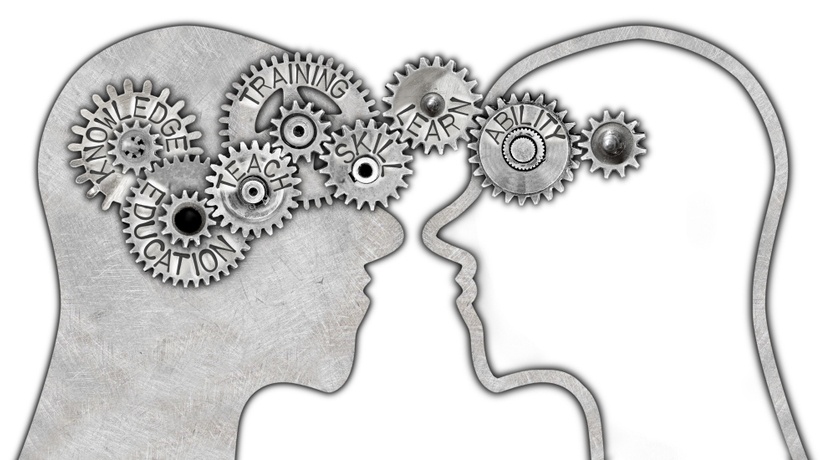Taking Training From Classrooms To The Workplace
I had mentioned previously that it is not enough for learning to be made available for users, but we must make it conducive for learning that is acquired to be transferred to the workplace. I want to expand on that theme a little more in this article.
What Is Meant By Learning Transfer?
I want to define the learning transfer as "the extent to which knowledge, skills, and abilities acquired in a training setting result in a sustained change in the way work is performed." This definition has been taken from the work of Professors Ramon Wenzel and John Cordery of the University of Western Australia.
Research Professors Brian Blume, Kevin Ford, Timothy Baldwin, and Jason Huang classify learning transfer into 2 categories:
- Generalization
The extent to which knowledge and skills acquired in a learning setting are applied to different settings, people, and/or situations. - Maintenance
The extent to which changes that result from a learning experience persist over time.
As can be seen, what has been learned during a learning intervention needs to be used or transferred to the workplace. If this does not take place, the resources and effort that have gone into learning, both from organizations and from learners are wasted. Although there is a dispute as to the amount of training that gets transferred, there is no doubt that much of the training fails to result in making a difference at the workplace.
How Is This To Be Done?
While there were a number of studies done on learning transfer, the most influential one was by university professors Kevin Ford and Timothy Baldwin.
This simple framework incorporated 3 elements:
- Training input, which included trainee characteristics, training design, and work environment.
- Training output, which was the amount of learning that occurred in a program and how much of that was retained once the intervention was complete.
- Conditions of transfer: How the knowledge and skills that were acquired in a session would be maintained and transferred over time.
There were many iterations to this framework and multiple dimensions were added to this. Most of these worked around the pre-training activity, the training event itself, and the post-training activity. It is the one by Elwood Holton and Timothy Baldwin that I want to reference here. They expand the time period into five points. Here, the focus is on a learner, a learning event, and an organizational context.
Holton and Baldwin explain that at Time Point 1, a learner or a learning team comes into the process both as an input and as a unit that needs to be considered when we talk about learning transfer.
They bring into the process 4 elements that also influence the whole transfer process:
- Ability
- Motivation
- Individual differences
- Prior experiences
Time Point 2 corresponds to the pre-training activity stage. Time Point 3 would be the equivalent to the training event stage and Time Point 4 to the post-training activity stage. Points 2 and 4 are key here; this is where the major interventions take place: the learner/team intervention and the organization intervention. It is at these two points that most of the influence takes place. These points, 2 and 4, can have before and after stages and multiple interventions themselves. In addition, these two stages can take up a lot of time too.
Point 3, which is the learning event itself, is composed of two dimensions: content and design. The content that is taught in an event must be valid and authentic. Learners must be able to perform at the workplace after consumption of the content. The design part means that what is taught as part of the learning event needs to be done in a manner so that learners are able to use it at their jobs.
The fifth point in the model represents the outcomes of a training event. There are 2 aspects that are brought about:
- Near transfer
- Far transfer
Near transfer is said to have occurred when the actual skills taught in a training program are applied to the working environment. Near transfer is when the problems a learner will face match the content of a training program.
The far transfer is when learners are required to adapt what they have learned to novel or changing situations. When a problem at the workplace or troubleshooting requires a learner to apply skills differently, this calls for far transfer. The far transfer is difficult to accomplish and requires a training design to include general concepts, broad principles, etc.
While the above model is a conceptual framework, it can be seen that there are many variables that operate as we think about learning transfer. Each of these elements can be addressed and managed to help with the learning transfer process within organizations. The whole learning transfer system can be thought of as combining two aspects: knowledge acquisition and enhanced performance at the workplace.
Transfer distance is a concept that also needs to be considered when we think of how learners can transfer their learning to show performance. This model shows that a transfer progresses through two phases, with six events that represent points along the journey from learning to performance. Phase 1 is the learning process, the traditional domain of training. This is where a learner moves from knowledge to performance capability.
Node 1 represents the starting point for most training, where cognitive knowledge, the "know that" is acquired. For a transfer to occur, knowledge needs to be expanded to node 2; the "how-to" knowledge is addressed here. These two nodes are the minimum that is needed to make transfer possible. Node 3, the "building capability through practice" phase will enhance transfer by providing an opportunity to practice what is learned.
The second phase moves a learner from performance capability to sustained performance and represents the work process. Node 4 represents the traditional notion of near transfer, the application of the material to the immediate job. This node also represents proficiency, not just when a learner attempts an application. The next step is Node 5. The performance level attained is repeated and maintained. It is not sufficient to have a sporadic use of learning outcomes; this must be maintained consistently. Node 6 is the pinnacle of learning transfer. Here is the application of learning for tasks that were not originally anticipated by the training but are related are addressed. Thus, the effects of the training program are multiplied.
Why Is It Important?
It is not enough for L&D and training departments to be looking at great learning programs; it is their responsibility to ensure that learning is transferred from a classroom to a workplace. Any training that leaves learning transfer to chance is less likely to make an impact. The role of line managers in promoting the transfer climate also needs to be emphasized. They too must make sure that the new behaviors or new skills acquired are practiced so that business outcomes are met.
Carla O’Dell and Lauren Trees in their paper, "How Smart Leaders Can Leverage Their Experts" outline that there are at least 3 clear benefits that an organization with a proper transfer climate can look forward to:
- Turning mid-career employees into true experts
- Developing novices and newcomers so they can work independently and begin contributing to an organization
- Increasing the speed with which new knowledge is created and applied to emerging challenges and opportunities
Improving learning transfer in organizations is key to converting learning into business outcomes. As can be seen, it does not matter how great a learning content is if the knowledge and skills acquired are not transferred into performance. Following through and ensuring learning transfer will help with increased learning impact, employee motivation, and higher chances of learning meeting business goals. The bottom line is clear: If L&D is to matter, learning must be transferred from a classroom to a workplace.
Sources:
- Improving Learning Transfer, Elwood F Holton & Timothy T Baldwin Josey-Bass (2003)
- How Smart Leaders Can Leverage Their Experts, by Carla O’Dell and Lauren Trees
- Training Transfer Research: A Manager’s Guide and Bibliography, Wenzel, R. & Cordery, J. (2014) Australian Institute of Management – Western Australia, Perth.









